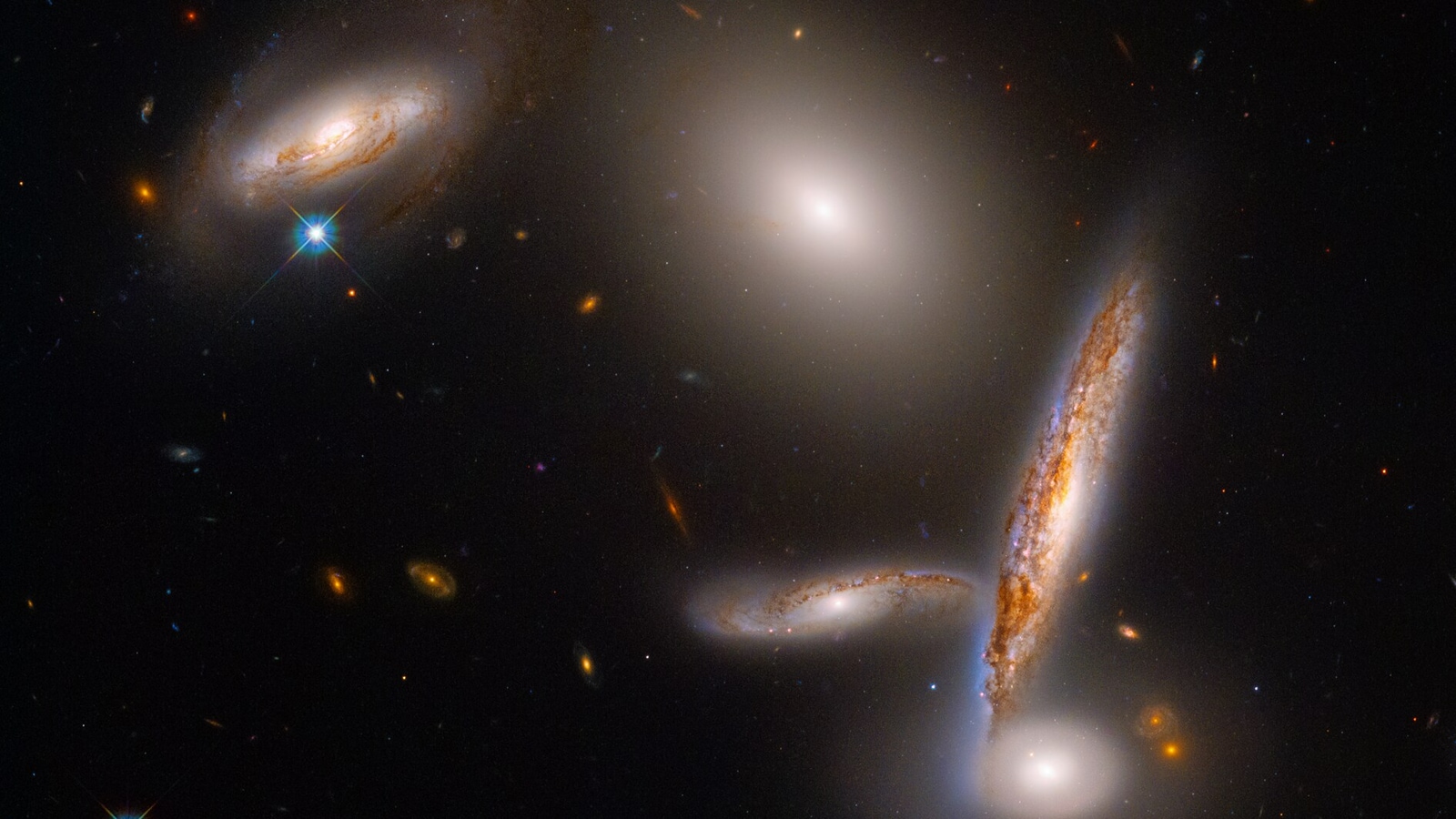
NASA says Hubble Space Telescope captured a mesmerizing look of an unusual collection of five galaxies. NASA says it is unique!
32 years! That’s how much time has been spent by NASA's Hubble Space Telescope to discover new galaxies, mesmerizing moments of stars, planets, and a lot more. Yes, it is the birthday of the Hubble Space Telescope! There is not even a single time when the Hubble Telescope failed to impress us with what it captures. Now, celebrating the Hubble Space Telescope’s 32nd birthday, NASA has shared another spectacular photo of five closely-knit galaxies which looks like a rare gravitational dance of galaxies! The image represents The Hickson Compact Group 40.
NASA explained the image while indicating the menagerie of galaxies that includes three spiral-shaped galaxies, an elliptical galaxy, and a lens-like galaxy. It further says that somehow these different galaxies crossed paths during their evolution which has created an exceptionally crowded and miscellaneous galaxy sampler. These closely knitted group of galaxies can be found in the heart of huge galaxy clusters. Though, these galaxies are notably isolated in their own small patch of the universe.
How rare is the five galaxies’ gravitational dance?
NASA reveals one possible explanation behind the Eclectic Galaxy Grouping as there's a lot of dark matter associated with these galaxies. “As the galaxies plow through the dark matter they feel a resistive force due to its gravitational effects. This slows their motion and makes the galaxies lose energy, so they fall together,” NASA said.
And that’s what makes these five galaxies’ gravitational dance a rare snapshot that catches the galaxies at a very special moment in their lifetimes. To be precise, in almost about 1 billion years! This is the time when they will eventually collide and merge to form a giant elliptical galaxy.
However, there are more than 100 such compact galaxy groups that have been captured in the past several decades, but Hickson Compact Group 40 is one of the most densely packed. NASA’s observations suggest that such closely packed groups of galaxies may have been more abundant in the early universe which might have provided fuel for powering black holes! Such discoveries help astronomers to study and sort out when and where galaxies assembled themselves and how they are assembled.
The Hubble Telescope was launched back on April 25, 1990, and has taken 1.5 million observations of approximately 50,000 celestial targets till today.
https://news.google.com/__i/rss/rd/articles/CBMihgFodHRwczovL3RlY2guaGluZHVzdGFudGltZXMuY29tL3RlY2gvbmV3cy9uYXNhLXNheXMtaHViYmxlLXNwYWNlLXRlbGVzY29wZS1hd2Vzb21lLWRhbmNlLW9mLTUtZ2FsYXhpZXMtY2hlY2stcGhvdG8tNzE2NTA1MjMxMTQ2NzAuaHRtbNIBAA?oc=5
2022-04-21 06:41:33Z
1391690346
Tidak ada komentar:
Posting Komentar